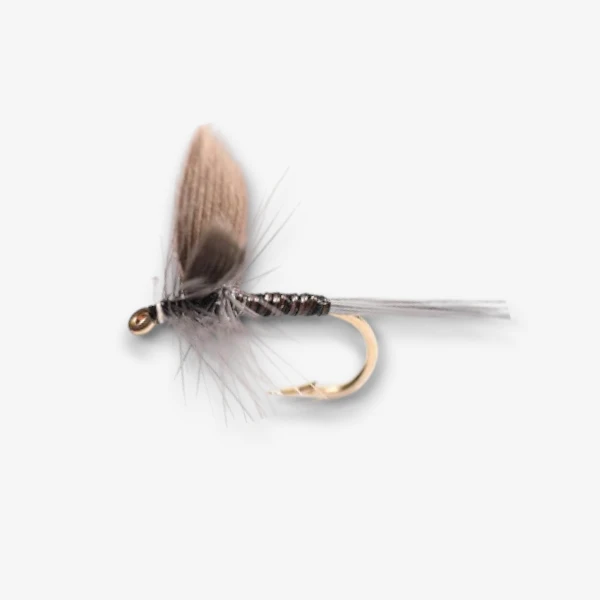Blue Quill
Description
Overview: The Blue Quill, also known as the Mahogany Dun, is an early-spring mayfly that emerges in cool, clear streams and rivers. These small, elegant insects are a critical food source for trout as they break winter dormancy. Blue Quills are typically seen from March through May, depending on the region, and their subtle emergence is marked by rising trout targeting both emergers and adult duns in calm waters. Their rich mahogany-brown coloration and delicate upright wings make them a favorite among fly fishers.
Nymph Stage: Blue Quill nymphs are slender swimmers, measuring about 1/4 to 1/2 inch long. Their bodies are dark brown to mahogany with faint segmentation, making them well-camouflaged against rocky streambeds. Nymph patterns tied on hook sizes 16 to 18 effectively imitate them. Drift these flies near the bottom with a dead drift, focusing on riffles and edges where trout hunt for emerging nymphs during the pre-hatch.
Emerger Stage (Subsurface): Emerging Blue Quills are vulnerable as they shed their nymphal shuck and transition to the surface. These emergers are small, with olive-brown bodies and translucent wings. Emerger patterns tied on hook sizes 16 to 18, such as soft hackles, are ideal. Fish them in the film with a slight lift or swing to mimic their natural ascent, targeting slower water just downstream of riffles.
Adult Stage (Dry): Adult Blue Quills are about 1/4 to 1/2 inch in length, with mahogany-brown bodies and slate-gray upright wings. Dry fly imitations tied on hook sizes 16 to 18 are perfect for matching the hatch. Present these flies with a dead drift in calm pools or pocket water, where freshly emerged adults float gently on the surface. Late-morning to early-afternoon hatches provide the best opportunities to fish these duns.
Hatch Chart
Subscribe to view hatch locations. Hatch data is available for all species.


